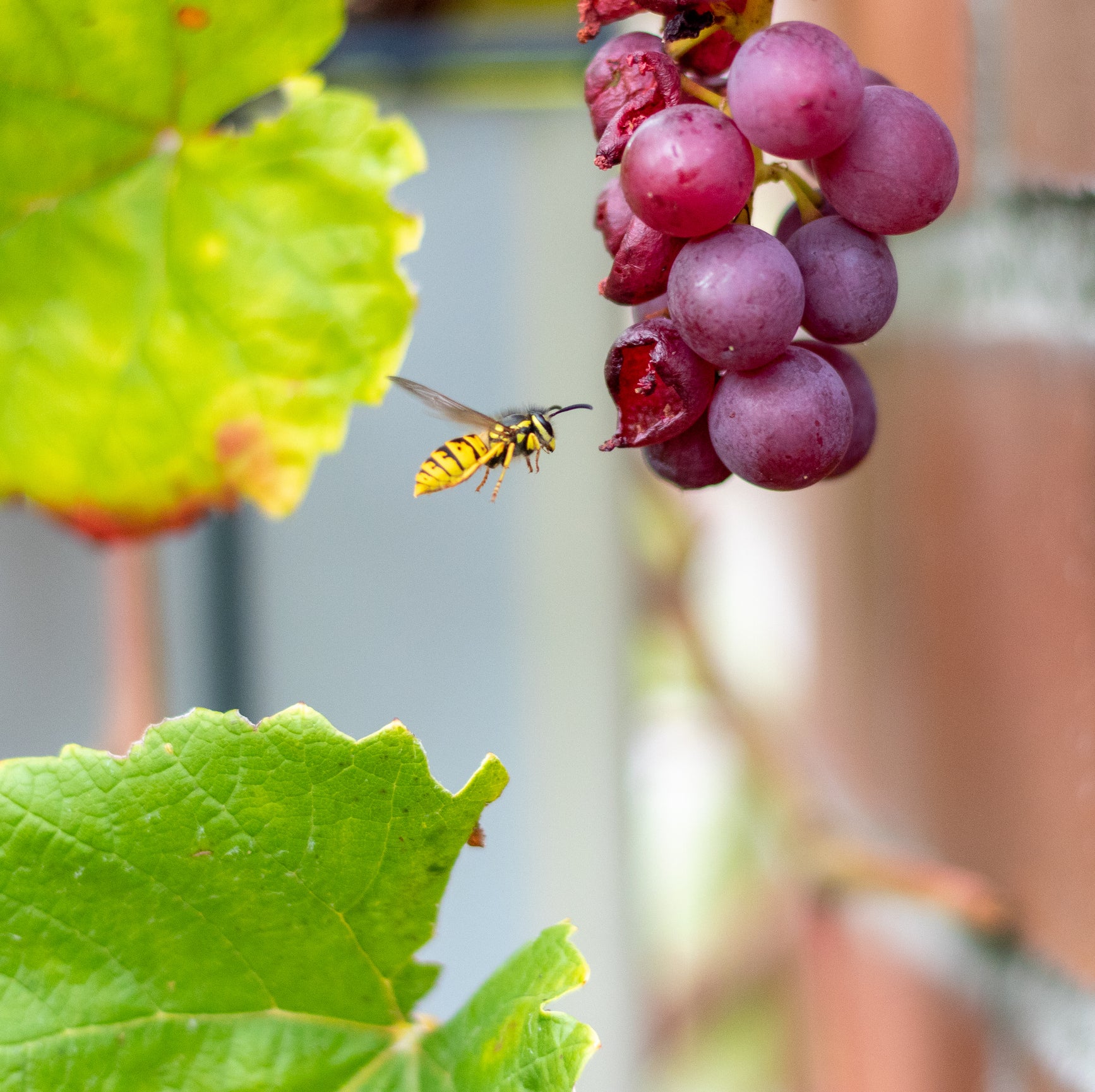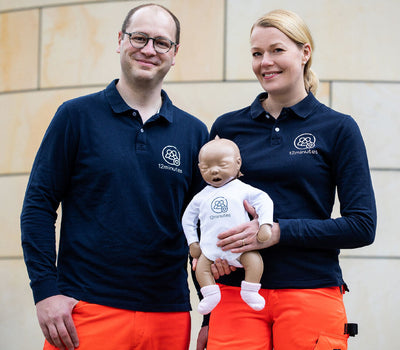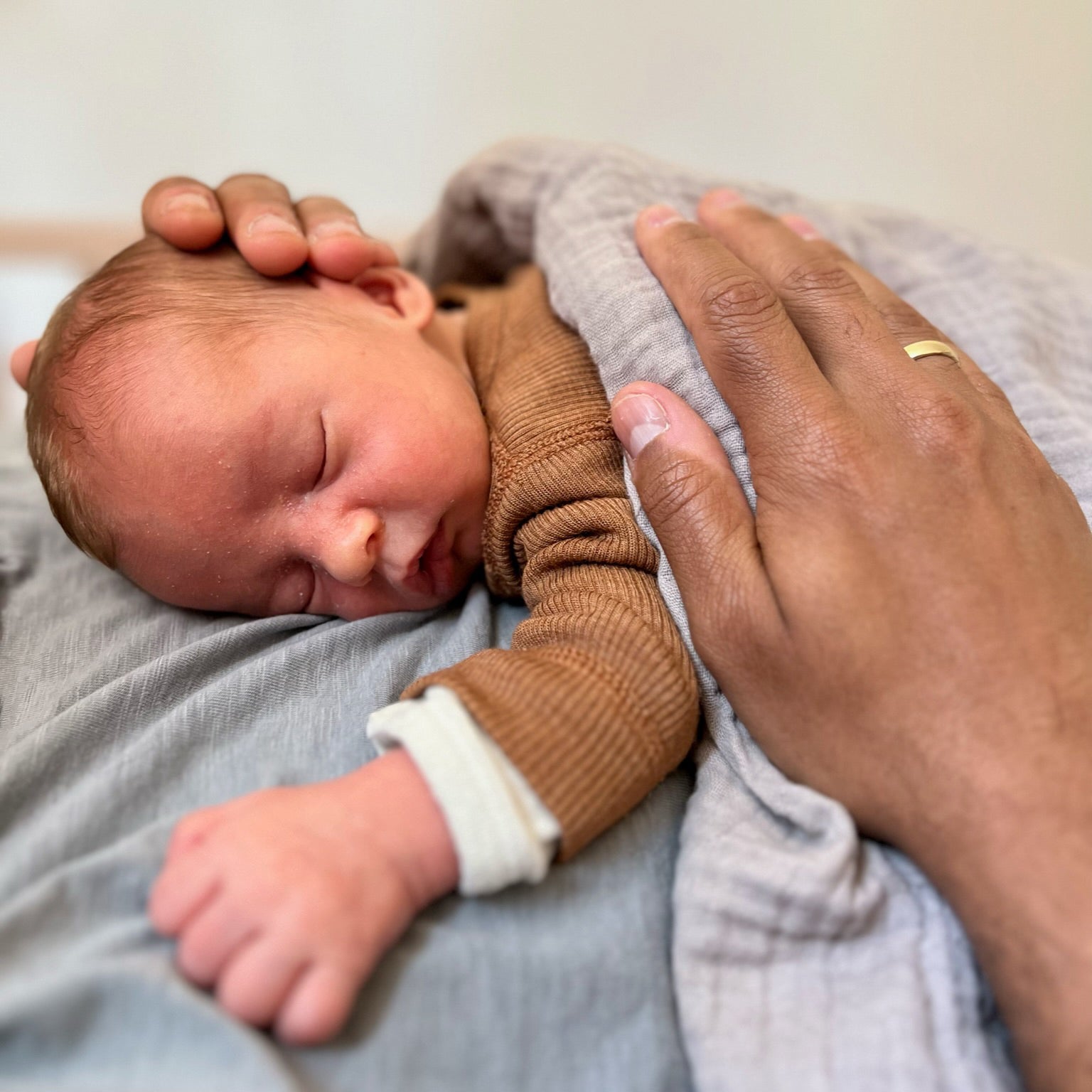Bee and wasp stings
Summer is slowly approaching, and with it, the likelihood of bee your child getting bee and wasp stings. These stings are pretty common and are especially unavoidable for kids. Sadly, studies show that Germany's insect population has dropped by a whopping 75% in the last three decades. Bee and wasp stings share one thing in common: they hurt—a lot. Particularly in young children, pain and fear often go hand in hand. But there are differences between the two: when a bee stings, the stinger and its poison sac usually get stuck in the skin, causing the bee to die. Wasps, on the other hand, pull their stingers out and can sting multiple times.
You can tell the difference between a bee sting and a wasp sting by examining the stinger that remains lodged in the skin. If it's still there, the best course of action is to use fine-pointed tweezers and some disinfectant. Begin by cleaning the puncture site and the tip of your tweezers. Let the disinfectant sit for about 15 seconds (or as per the manufacturer's instructions). Non-alcoholic disinfectant spray doesn't sting and provides a pleasantly cooling sensation, making it tolerable for most children.
Next, take the stinger out with a swift, controlled motion at a 90° angle to the skin. Avoid touching the poison sac, which is located at the stinger's outer end. Afterward, double-check to be sure that there aren't any little pieces of the stinger left in the skin. Next, apply generous disinfection and cover the puncture with a bandage. You can also ease pain and itching by applying a localized cooling pad.
If you're dealing with really itchy bee or wasp stings, it's crucial to prevent infection. Scratching can introduce bacteria from your fingers and nails into the wound, potentially causing inflammation later on. If, 48 hours after the sting, the area around it remains red, warm, swollen, itchy, or starts oozing pus, talk to your pediatrician. They can decide on the appropriate course of action, which can often mean an antiseptic bandage.
The myth of sucking the poison out of stings
As for the myth of sucking out a fresh sting, it's just that—a myth. It's not advisable, as it can introduce bacteria from your mouth into the wound. Instead, you can apply cooling gel or a bit of onion juice at home. These natural remedies have antibacterial properties and can help disinfect the area.
At home you can put cooling gel on the bite or a little onion juice on the wound. This naturally has an antibacterial effect and also disinfects again.
Bee and wasp stings
Since bees are not interested in cake and meat, you won’t often see them hovering in the air around food. Yeast in cake is something they do not want to introduce into their hive, as this ingredient disturbs can disturb the natural balance of the hive. It happens more often that bees are accidentally stepped on barefoot. Wasps, on the other hand, are attracted to meat and in particular anything sweet. Having breakfast in the garden or a barbecue in the evening are guaranteed ways to make sure that wasps will come. Because you can't see wasps that hide inside soda cans, you need to take care that children never drink anything directly from them. You should also avoid swatting or swiping at wasps, as this stokes their aggression. A better tip is to put a plate of food, ideally grapes, away from your table to attract the wasps.
Tick bites
After a lovely outing in nature, our first priority is checking for ticks. This step is crucial because ticks can transmit diseases to humans, such as Lyme disease or tick-borne encephalitis. In Germany, there are around twenty different tick species. Ticks survive by feeding on the blood of other creatures and can latch onto a host for several days. While they're feeding, ticks release saliva into the wound to prevent blood platelets from sticking together and to stop blood clotting.
Remove ticks properly
After a lovely outing in nature, our first priority is checking for ticks. This step is crucial because ticks can transmit diseases to humans, such as Lyme disease or tick-borne encephalitis. In Germany, there are around twenty different tick species. Ticks survive by feeding on the blood of other creatures and can latch onto a host for several days. While they're feeding, ticks release saliva into the wound to prevent blood platelets from sticking together and to stop blood clotting.
If you come across a tick, it's best to remove it using a special tick removal tool. The key is to pull the tick out straight. You can use tweezers, pliers, or a tick card for this task. It's essential to avoid squeezing the tick's body if possible, as doing so might push pathogens from the tick into the bite wound. We understand that many of us might not frequently encounter this situation, especially with our own children.
In our experience, a tick card has proven to be a great tool. The significant advantage of the card is that it minimizes the risk of accidentally squeezing the tick or separating its body from the head, leaving parts of the tick on the skin. With the tick card, you gently "persuade" the tick to let go by sliding it along the skin's surface with lateral pressure. This allows for easy and complete removal without any tick fragments getting left behind.
After removing the tick (often called a bite), it's important to thoroughly disinfect the puncture site. If it starts bleeding, you can let the blood flow out. You can even apply gentle pressure around the bite area to remove any remaining tick secretion, reducing the risk of infection. It's advisable to avoid common myths like using glue or nail polish on ticks, as these methods can potentially increase the risk of transmitting pathogens to humans.
Small bloodsuckers - big danger
Afterward, it's crucial to keep an eye out for the development of a red ring around the bitten area, known as erythema or erythema migrans. This can occur in cases of acute Borrelia infection. If you notice this symptom, it's essential to consult a pediatrician or doctor promptly because antibiotic treatment becomes necessary in such instances.
Can you protect yourself from ticks?
Many people believe the myth that ticks drop from trees, but that's not accurate. Ticks actually prefer to stay in low-lying vegetation, close to the ground. They can typically be found at heights ranging from 30 to 60 centimeters, often in grassy areas or bushes. To protect children from ticks, there are some general precautions you can take. These include wearing closed clothing, long pants and sleeves, and tucking pant legs into stockings. Some hobby gardeners swear by adhesive tape, which is attached with the sticky side out at ankle height (but this is certainly only suitable for older children). You can also apply tick repellents to uncovered skin and clothing. These offer a certain level of protection, but unfortunately this only lasts for a few hours. Lastly, vaccination against tick-borne encephalitis (TBE) is always recommended in areas with a higher risk of transmission.





